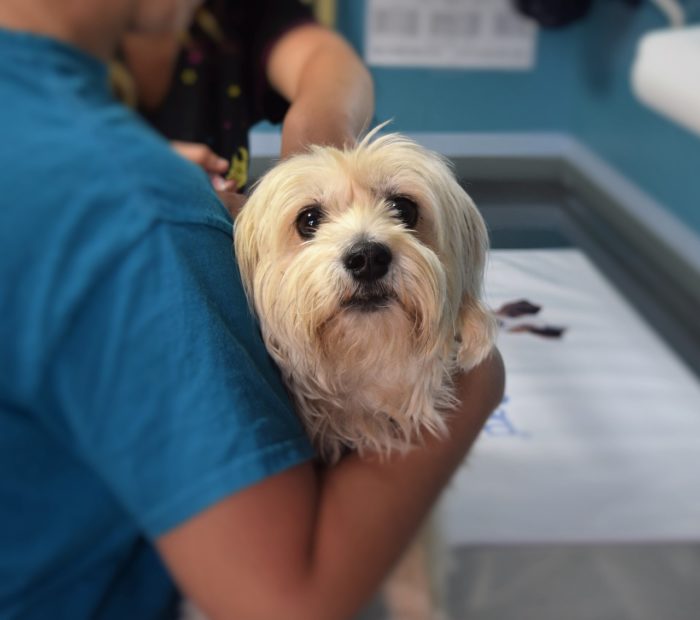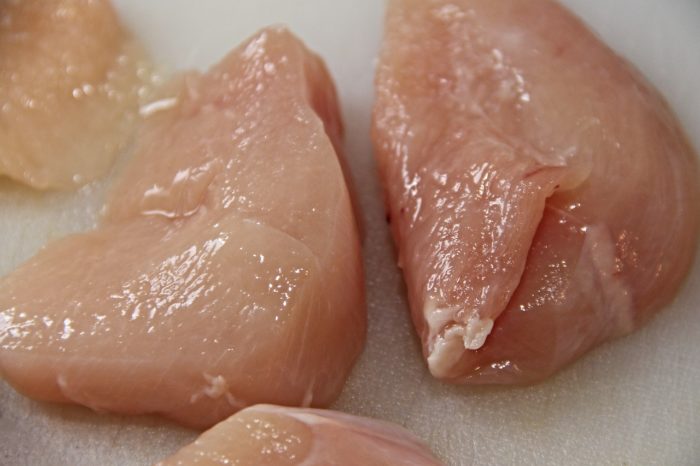 People can get pretty fired up when I talk about raw diets for pets. I’ll start off with my personal bias: I’d rather not see pets fed raw meat and raw animal-based products (e.g. pig ears and various bits-o-cow you can find in pet stores). There are clear risks to pets and owners from raw
People can get pretty fired up when I talk about raw diets for pets. I’ll start off with my personal bias: I’d rather not see pets fed raw meat and raw animal-based products (e.g. pig ears and various bits-o-cow you can find in pet stores). There are clear risks to pets and owners from raw
e. coli
Raw Pet Diets and Human E. coli O157 Infections
 I’ve written a lot about raw pet food in the past. Initially, the concerns were about Salmonella, since raw-fed dogs and cats have high rates of shedding Salmonella, and both pets and owners can get sick from it (owners can be infected directly by the pet or from handling or cross-contamination from the pet…
I’ve written a lot about raw pet food in the past. Initially, the concerns were about Salmonella, since raw-fed dogs and cats have high rates of shedding Salmonella, and both pets and owners can get sick from it (owners can be infected directly by the pet or from handling or cross-contamination from the pet…
E. coli O157 Outbreak From Raw Pet Food: Canada
 The Public Health Agency of Canada (PHAC) has announced an outbreak of E. coli O157 infections in people linked to Carnivora brand raw pet food, and Health Canada has issued a recall of a number of Carnivora products due to potential contamination with E. coli O157. Illnesses have been reported in four individuals in…
The Public Health Agency of Canada (PHAC) has announced an outbreak of E. coli O157 infections in people linked to Carnivora brand raw pet food, and Health Canada has issued a recall of a number of Carnivora products due to potential contamination with E. coli O157. Illnesses have been reported in four individuals in…
Carbapenemase-producing E coli in a veterinary hospital
 New antimicrobial resistance challenges continue to emerge. In the veterinary field (especially in small animals), we have the advantage of seeing what’s happening in human medicine first, since that’s often an early warning system for what we’re going to encounter. We’ve seen a variety of resistant bacteria first became a problem in people, and then…
New antimicrobial resistance challenges continue to emerge. In the veterinary field (especially in small animals), we have the advantage of seeing what’s happening in human medicine first, since that’s often an early warning system for what we’re going to encounter. We’ve seen a variety of resistant bacteria first became a problem in people, and then…
Raw diets and multidrug-resistant bacteria
 Back in 2008, we reported an association between feeding raw diets to dogs and shedding of cephalosporin-resistant bacteria in dogs (that makes me feel old… one of many things that does these days, I guess). It didn’t get too much attention at the time, since the main focus of the study was on Salmonella,…
Back in 2008, we reported an association between feeding raw diets to dogs and shedding of cephalosporin-resistant bacteria in dogs (that makes me feel old… one of many things that does these days, I guess). It didn’t get too much attention at the time, since the main focus of the study was on Salmonella,…
High pressure pasteurization of raw pet food diets
 Raw diets have been in the news a lot lately because of Salmonella contamination. It’s not surprising at all since bacteria like Salmonella, E. coli, Campylobacter and Listeria are expected to be found in raw meat (that’s why we cook it). We know that dogs and cats fed raw meat are at increased risk of…
Raw diets have been in the news a lot lately because of Salmonella contamination. It’s not surprising at all since bacteria like Salmonella, E. coli, Campylobacter and Listeria are expected to be found in raw meat (that’s why we cook it). We know that dogs and cats fed raw meat are at increased risk of…
Raw pet food and human illness
 Human health risks from raw pet food (either from exposure to pathogens in the food or in the feces of pets eating the food) are known to exist but they’re not well characterized. We know that dogs fed raw meat-based diets clearly have increased risk of shedding various pathogens, particularly Salmonella and multidrug resistant E.
Human health risks from raw pet food (either from exposure to pathogens in the food or in the feces of pets eating the food) are known to exist but they’re not well characterized. We know that dogs fed raw meat-based diets clearly have increased risk of shedding various pathogens, particularly Salmonella and multidrug resistant E.
Zinc, pigs and the meaning of antimicrobial stewardship
 Bacteria are smarter than we give them credit for.
Bacteria are smarter than we give them credit for.
Or maybe we’re not a bright as we think we are.
Antimicrobial stewardship is sometimes (wrongly) assumed to simply be the practice of “using fewer antimicrobials,” but it’s more complex than that, because the issue is complex. At face value, overall reduction in antimicrobial use is…
Move Over mcr-1. You’re Old News.
Recent identification of mcr-1, a gene that makes bacteria resistant to colistin (an antibiotic of last resort) raised a lot of concern. Now, there’s another one to be worried about, as a related gene, mcr-2 has been identified (Xavier et al, Eurosurveillance, July 2016).
In this study, 105 colistin-resistant E. coli from…
Cat hoarding and E. coli
 Cat hoarding has been in the news in the Toronto area a few times lately. Multiple incidents of serious cat hoarding have been identified in the past month, involving large numbers of cats being kept in horrible conditions. It’s not hard to see how cat hoarding can create infectious disease challenges. I can’t see how…
Cat hoarding has been in the news in the Toronto area a few times lately. Multiple incidents of serious cat hoarding have been identified in the past month, involving large numbers of cats being kept in horrible conditions. It’s not hard to see how cat hoarding can create infectious disease challenges. I can’t see how…